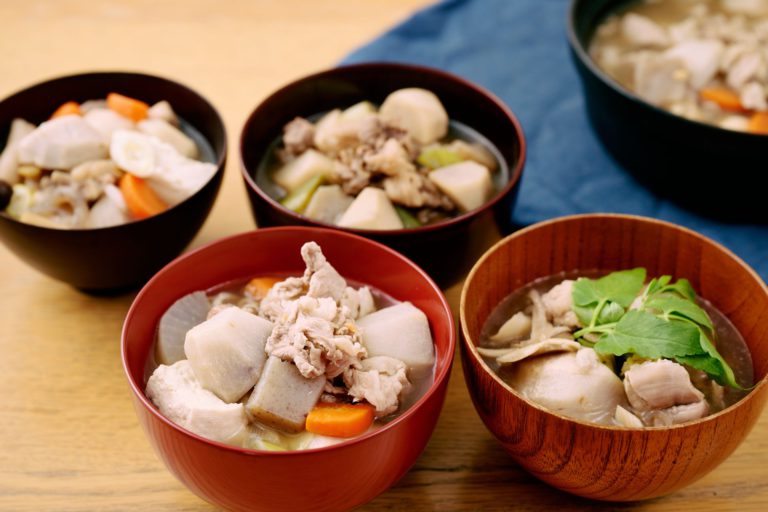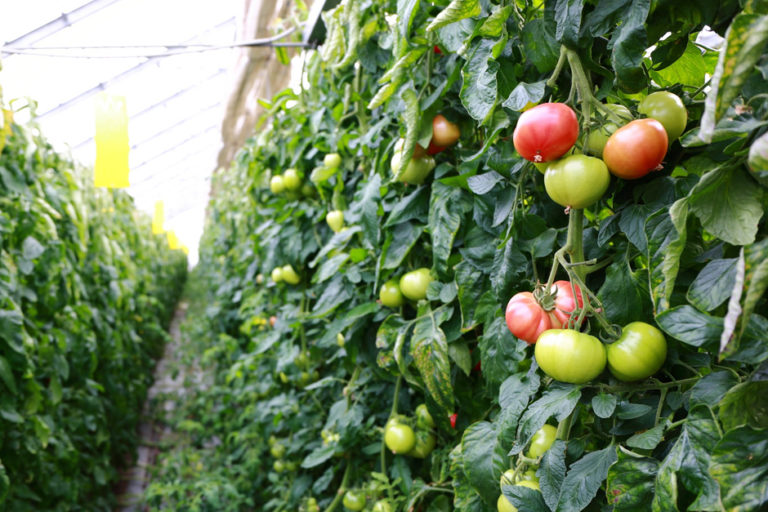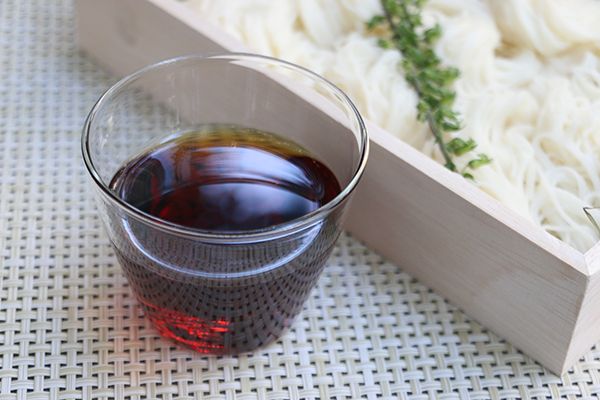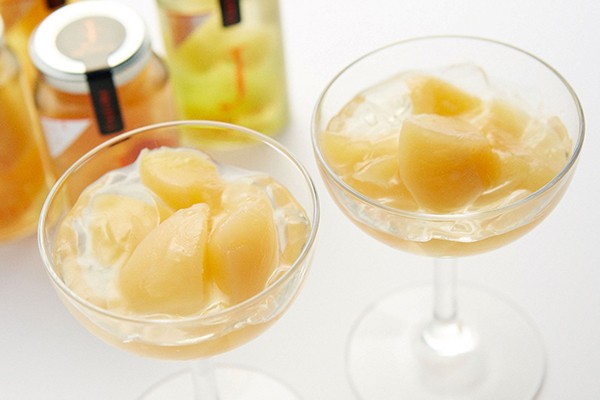Nanko Ume, a Product of Ancestral Wisdom Passed Down Until the Present Day
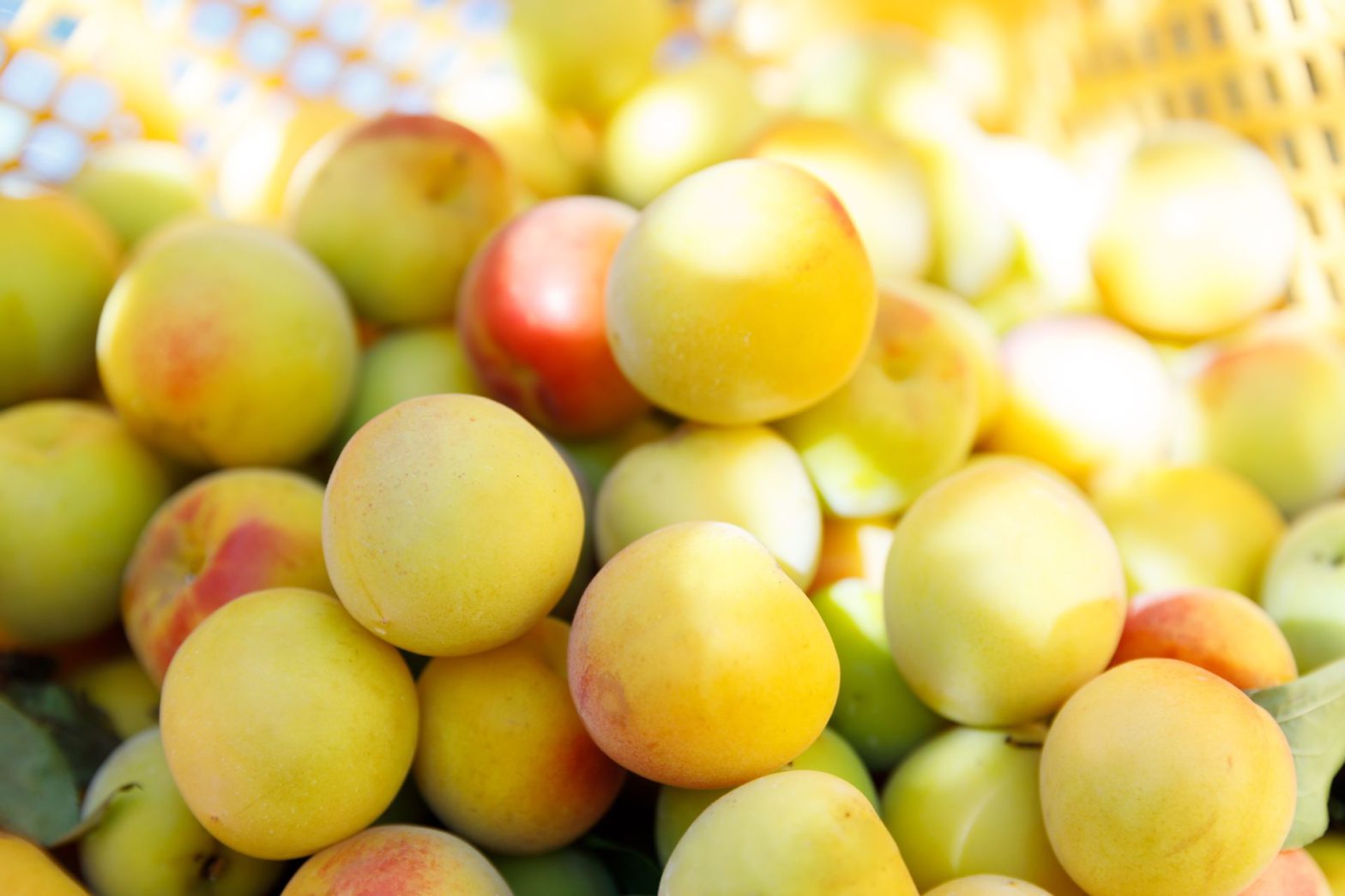
Ume cultivation in Minabe started 400 years ago
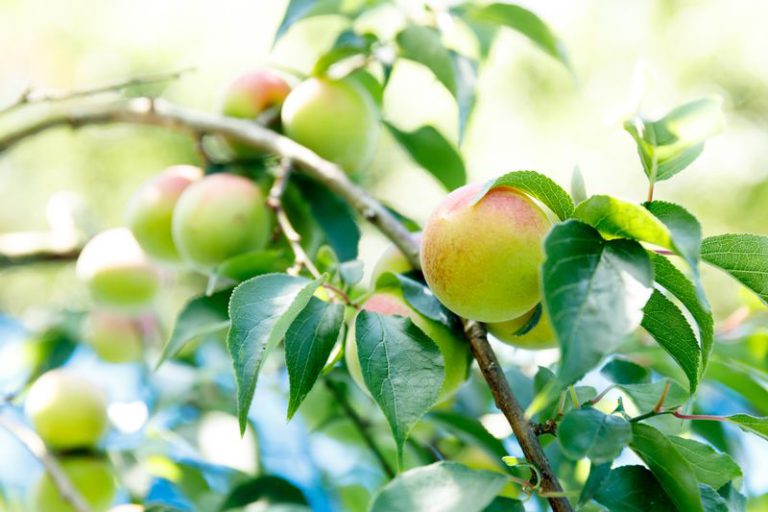
Ume is a fruit essential to the Japanese diet and there are an extensive variety of processed products available, such as ume vinegar, ume syrup, and ume paste, as well as classic umeboshi (pickled ume). That unique sourness of the fruit derives from citric acid and is said to aid recovery from fatigue and stimulate the appetite. Ume’s efficacy has been long known and umeboshi was valued as travel rations because it lasts for a long time. Ishinho, a medical book compiled in the Heian period (794-1185), even says that “umeboshi neutralizes three poisons.”
Located almost in the center of Wakayama, on the southwest side of the Kii peninsula, Minabe is a town that boasts the highest production of ume within Japan. Its yield in 2020, 18,600 tons, accounts for about 20 percent of Japan’s domestic market. Over 80 percent of Minabe working population are involved in the ume industry and there is a ume department in the town office, which is rare even at the national level. The Minabe Plum Garden, which comes into full bloom around February every year, is one of the most popular sightseeing spots in the area, is praised as a place with “a glimpse of a million plum trees whose fragrance spreads for many miles.”
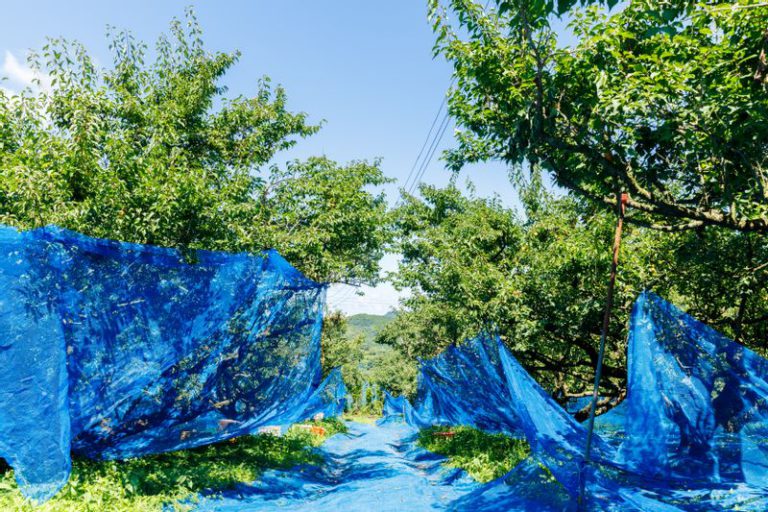
In Minabe, the production of ume began in Japan’s Edo period (1603-1867). With few plains and nutrient-poor rudaceous soil, Minabe was originally not suitable for agriculture. Seeking to overcome these difficulties, Tatewaki Ando, the feudal lord at the time, saw potential in the yabu ume growing naturally in the area and encouraged people to cultivate this vigorous variety on barren land, as well as on mountain slopes.
The climate and natural features of the area were perfect for ume cultivation; the soil that contains uridaniishi (an underground rock) is rich in calcium, which is vital for the growth of ume, and the area has a mild climate ideal for ume throughout the year because the Japan Current flows into the Kii Channel, the sea area southwest to the town.
The lord promoted the further popularization of ume cultivation by exempting the cultivation areas from taxation. Later on, as umeboshi became popular in Edo (now Tokyo), Minabe, as well as other production areas, began shipping barrels of ume to the city.
As the Meiji period (1868-1912) began, local farmers, Kouuemon Uchimoto and Tameshichi Uchinaka, worked fields for uchimoto ume in the Oshine area, and this is said to be how ume field management began in Minabe. Later on, Tameshichi’s first son, Genzo, built a ume processing factory in the area to promote the commercialization of the fruit.
Minabe and its neighboring town, Tanabe, both of which produce ume as their local industry, use a circulating agricultural system that has been passed down for generations and is called the “Minabe & Tanabe Ume System.”
They preserve the fuelwood forests of ubame oak and oak around ume cultivation slopes in order to prevent collapses. These forests are managed and developed by charcoal makers, which helps preserve the woodlands close to the towns, as well as provides selectively cut trees as raw material for bincho-tan (white charcoal).
The amount of rainwater flowing into rivers is consistent, thanks to the water retaining capacity of the soil maintained by the ume groves and fuelwood forests.
This allows purified water to flow into reservoirs in the mountains and paddy fields in the mountain villages, as well as prevents flooding. In addition, honeybees living in the fuelwood forests contribute to the pollination of ume, while ume flowers provide the bees with their nectar in return.
Making use of this natural cycle, the Minabe and Tanabe Ume System was certified as a Globally Important Agricultural Heritage System in 2015.
Nanko ume, the best variety selected based on wisdom gathered from industry, government and academia.
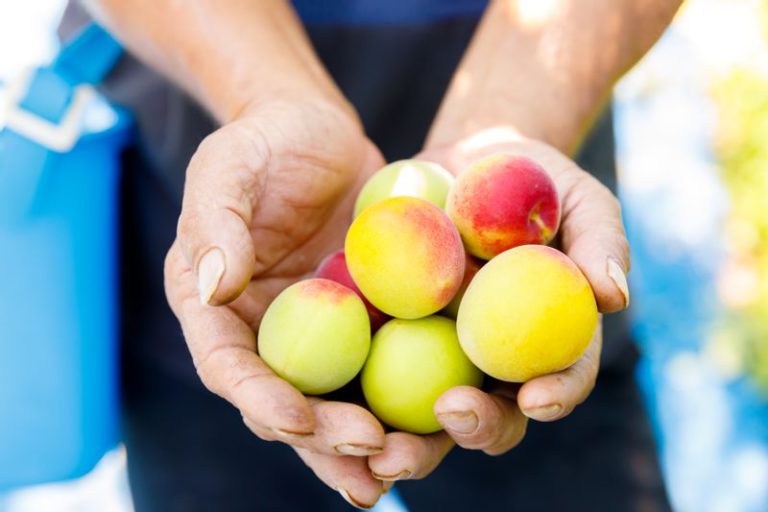
Minabe is also known for being the origin of Nanko ume, an ume variety said to be the best of the best. Nanko ume is larger than other varieties, with its 4L size being as large as about 5 cm, and has a thick flesh and fruity aroma. Young green Nanko ume, which is refreshingly sour, is processed into ume brandy, ume syrup, candied ume, etc., while ripe Nanko ume, which is soft, is perfect for umeboshi and ume jam.
Nanko ume was born in 1950. Before that, there were as many as 114 varieties cultivated in Minabe and their quality was not consistent. For this reason, the then Agricultural Cooperative began selecting superior indigenous varieties to make the market more stable. Designating Katsutaro Takenaka, a teacher in charge of Minabe Highschool’s gardening club, as chair and gathering experts from industry, government and academia, they established the Association of Superior Seed Tree Research and Selection.
The research and selection association selected 37 excellent varieties and conducted a 5-year research on them to single out the best one carefully, narrowing them down to 14 in the second year, 10 in the third year and so forth. In the end, takada ume, which was discovered by Sadagusu Takada in the Meiji period (1868-1912), was selected as the best one. In 1965, the variety was named “Nanko ume” to honor Minabe Highschool for the hard work done there to research it.
Aspirations inherited by ume farmers from their predecessors
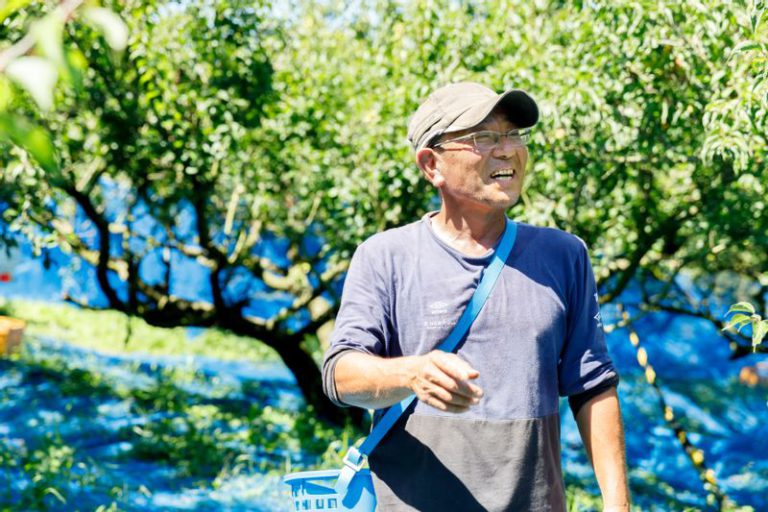
“Each ume variety, such as yabu, uchimoto, takada, and nanko, has its own history. Today’s ume cultivation in Minabe is a result of ambitious attempts and efforts made by our predecessors. They may have been scorned by others, but they followed through with their beliefs to create a prosperous future for the region.”
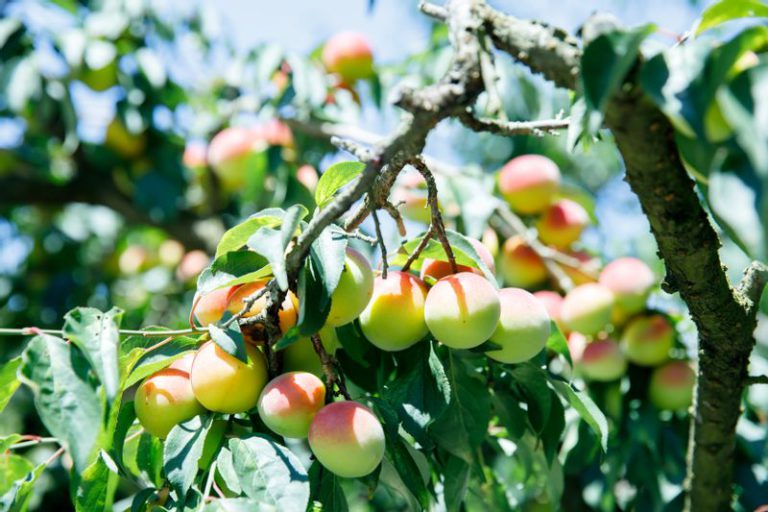
So says Mr. Yasuo Yamamoto, who runs the Yamamoto Farm in the Oshine area in Minabe. The ume farm has been in business for two generations and Mr. Yamamoto even served as chair of the Council of Kishu Minabe Umeboshi Producers until spring 2021.
I visited his farm in late June, right after the rainy season ended in the Kinki Region. He was harvesting ripe ume busily in the intense heat. The Nanko ume he had grown with the utmost care had gradations from bright red to yellow. The trees were loaded with so much fruit that the branches bent down, giving off a sweet and sour scent all over the grove.
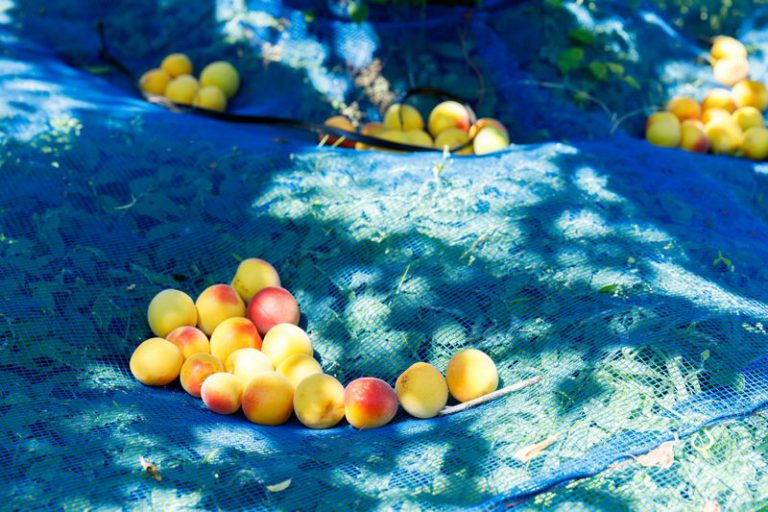
“Like ears of rice, ume trees bow as they bear fruit.” Making unique, amusing jokes, he quickly picked up some ume that had fallen to the ground with a landing net. Unlike young ume, which is hand-picked, ripe ume is harvested after it falls to the ground naturally. The nets spread all over the ground are to protect the surface of plums when they fall to the ground.
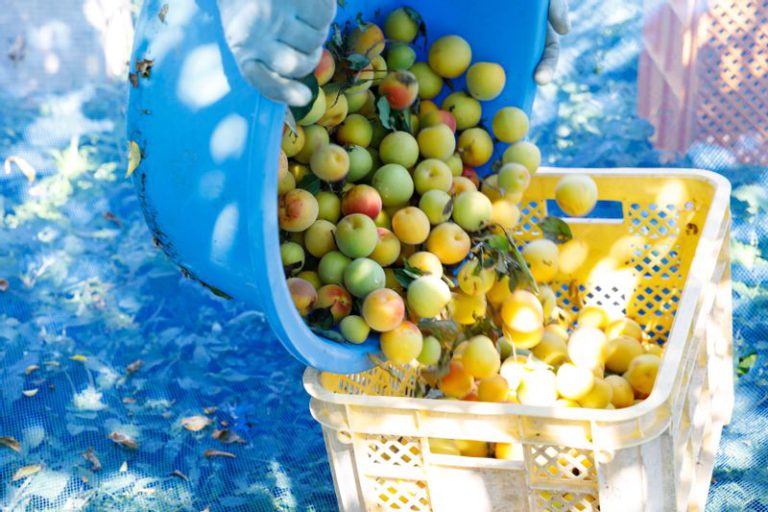
As he went up and down the hills repeatedly to get to good harvesting points, a harvesting container with a capacity of 20 kg was filled up in just 10 or so minutes. Freshness is vital when processing ume; once the back of his truck is loaded with containers, Mr. Yamamoto takes them to a nearby processing factory within the day, and he repeats this again and again every day.
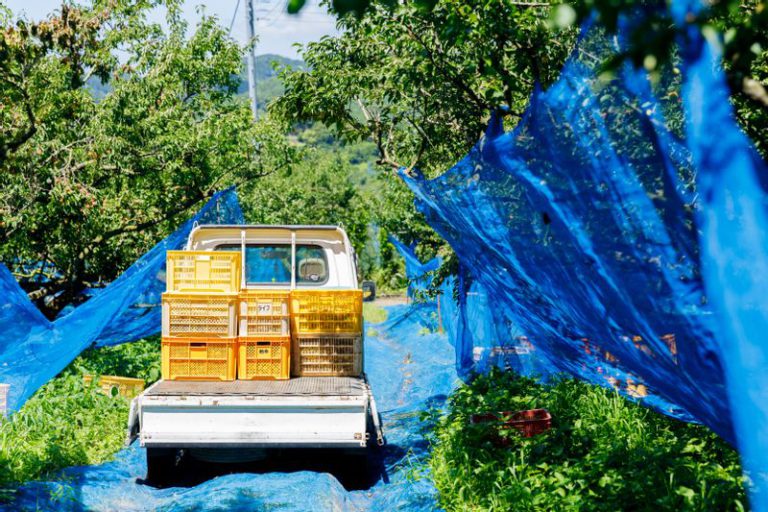
While the picking season continues from late May to early July, ripe ume can be harvested only in the last few weeks of the season. He says that, on some days in a year with abundant harvest, he worked from 4 a.m. to 11 p.m. without a break.
Harvested plums are selected, washed and sorted into different ranks and then pickled in coarse salt for 20-25 days. After that, they are dried in the sun for a few days to become shiraboshi ume, which contains salt at high concentration. This phase is called the primary processing, and the secondary processing is where chomi umeboshi is produced by processors by desalting and seasoning shiraboshi ume. Apparently, most ume farmers in Minabe do the primary processing from late July to late October.

In addition to the processing work, ume farmers take care of their ume throughout the year, including fertilization work done at the beginning of spring and autumn and soil cultivation and pruning in the winter. Since ume is usually grown outdoors, they are troubled by bad weather and pests from time to time. Even Mr. Yamamoto, who has been in the industry for 30 years, says that he rarely produces ume with truly satisfactory quality.
“In some years, all the conditions for the best ume, including soil cultivation, the climate and the timing of the rainy season, are met perfectly, or ii anbai (a Japanese idiom derived from a plum-related word that means just right). The plums yielded in such a year is so beautifully spherical I can’t take my eyes off them.”
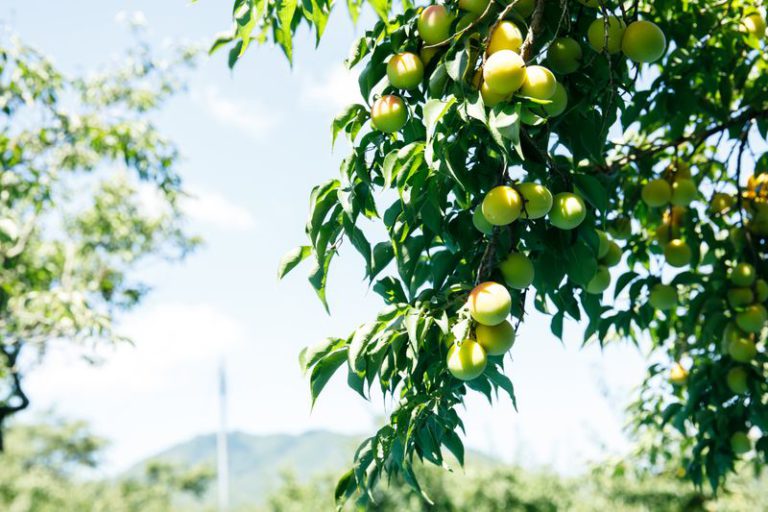
The Council of Kishu Minabe Umeboshi Producers promotes Minabe’s ume cultivation and Nanko ume actively, as well as produces ume. They provide local elementary and junior high schools with umeboshi for school meals and sells goods that come with umeboshi, through capsule toy vending machines. During the Ume Picking Workcation implemented in June 2021, they harvested ume with business managers and teleworkers who visited the town from outside the prefecture.
The ambitious spirit of the predecessors who developed the ume cultivation system has been passed down untarnished to today’s ume farmers in the region.

